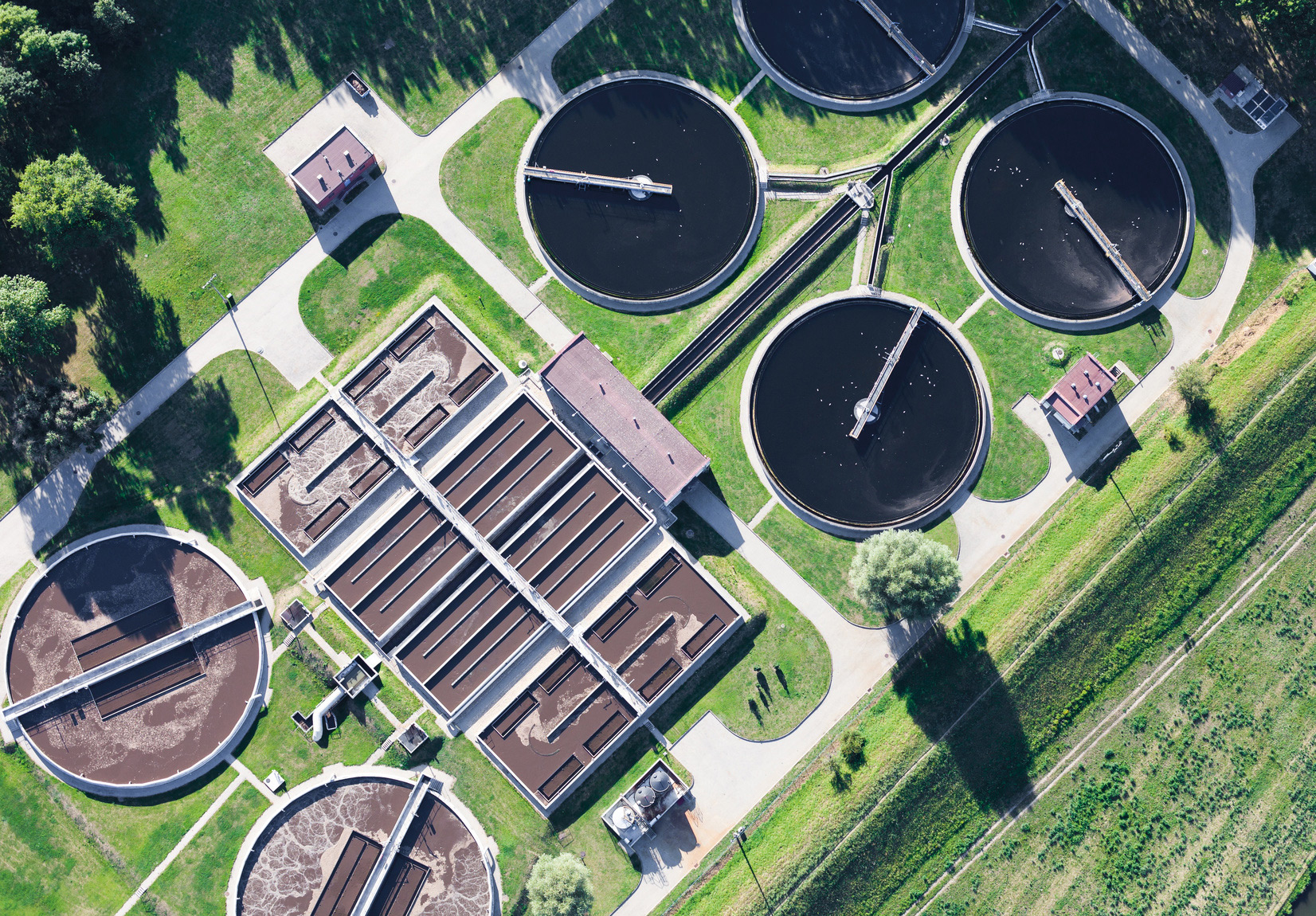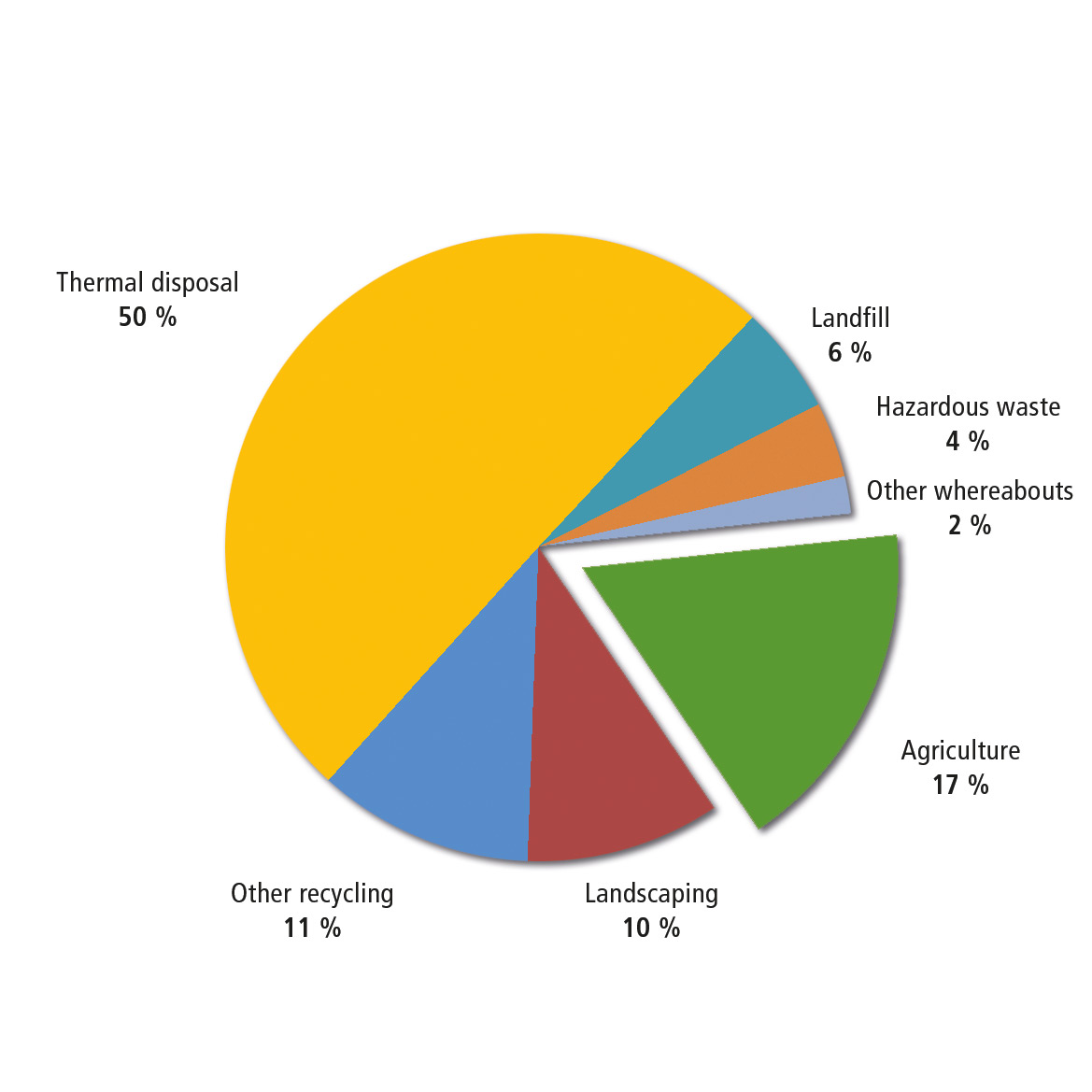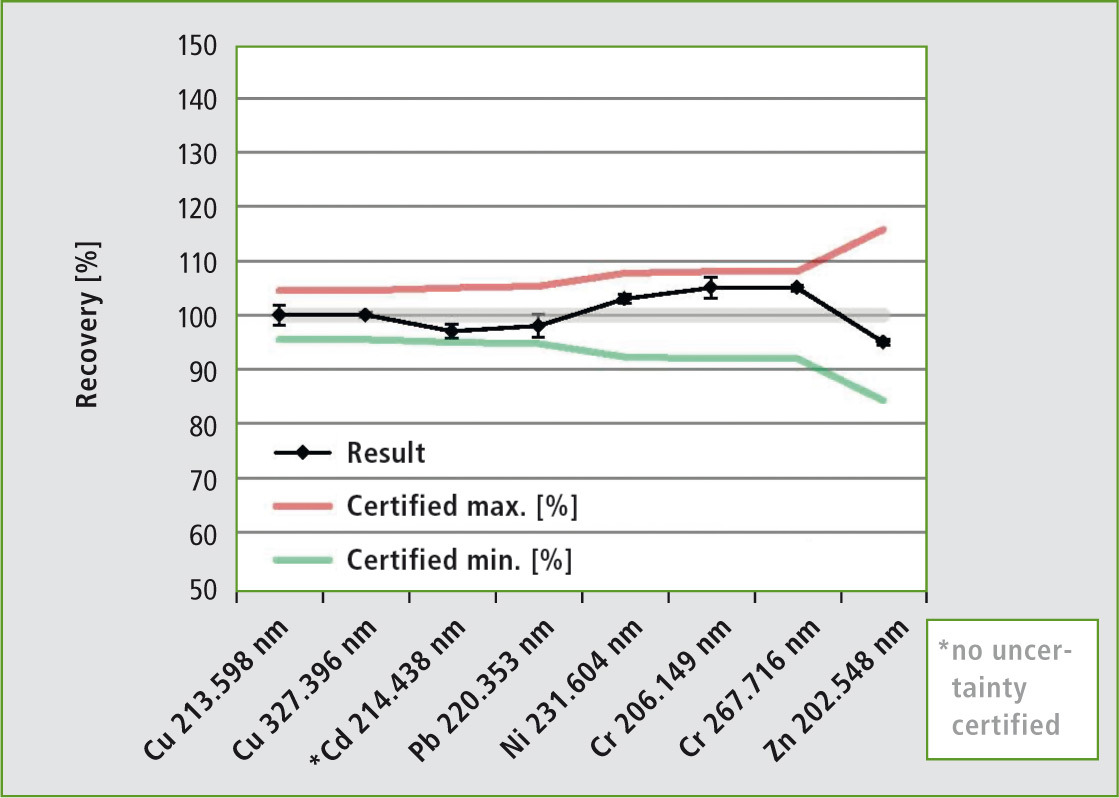Farmland or flame?
Analysis of heavy metals in sewage sludges

In Germany, 3.6 million tons of sewage sludge (dryed matter) arises each year. Due to high nutrient levels of nitrogen and phosphate, this waste product of sewage treatment plants is of particular interest to agriculture. But before it can be used as a fertilizer, certain conditions must be met. The heavy metal content, for instance, must not exceed specified limit values. Should this be the case, other applications are still possible, such as the use as fuel and subsequent landfilling. All disposal routes for sewage sludges as well as their potential percentages are summarized in figure 1.
 Figure 1: Disposal routes for sewage sludges from communal wastewater treatment plants in Germany in 2010 (source: German Federal Statistical Office, 08/2013)
Figure 1: Disposal routes for sewage sludges from communal wastewater treatment plants in Germany in 2010 (source: German Federal Statistical Office, 08/2013)
Fast determination of heavy metals in sewage sludges
How can the determination of heavy metal content in sewage sludges be carried out within a short time? For this purpose a simultaneous measurement method is the best suitable one, like it can be performed with Shimadzu’s ICPE-9000, an inductively coupled plasma with optical emission spectroscopy (ICP-OES). After a single measurement the information of all calibrated elements is available, whereat more than 70 elements can be chosen, depending on the problem at hand, like in this case the heavy metals. This multi-element measurement is possible due to a large 1 inch2 CCD chip whereby the entire wavelength range of 167 nm up to 800 nm is detected simultaneously.
Within a very short time, the concentration of many elements present in sewage sludge is determined, including the phosphorus content – a criterion for selecting the ICPE-9000 over atomic absorption spectrometry. Other aspects for selecting appropriate elemental analysis methods can be found on page 16 of this issue.
In the framework of this investigation the elements lead (Pb), cadmium (Cd), chromium (Cr), copper (Cu), nickel (Ni) and zinc (Zn) are determined. For these elements, limit values are defined in the German Sewage Sludge Ordinance (AbfKlärV, § 4, section 12). When these limit values are exceeded, the sludge may not be used as a fertilizer and is to be used in an alternative way (see figure 1).
Sample preparation and measurement
Sample preparation was carried out in accordance to DIN ISO 11446. Essentially, this means that 2 g of the dried sample is boiled under reflux in 28 mL of aqua regia for two hours at 150 °C. The resulting extract is subsequently filtered (0.45 µm membrane filter) and diluted to a volume of 100 mL. After another 1:5 dilution the samples are placed with the calibration standards to the ASC-6100 autosampler and the fully automated measurement can start.
A special feature of the ICPE-9000 is that measurements can be carried out under both radial and axial plasma observation, without the need for any instrument conversion. This fully automated switching between the observation directions becomes important especially with respect to additional elements, as radial plasma observation is less sensitive, and this way it is possible to determine high-concentrated elements without further sample dilution. In addition to these savings in time, the use of the Mini Torch contributes significantly in minimizing the consumption of argon gas resulting in low level running costs.
Results
For method development, a certified European Reference Material ERM®-CC136a (sewage sludge) was investigated prior to the measurement of real samples. When the certified values can be determined, the accuracy of the method and suitability of the ICPE-9000 is ensured.
 Figure 2: Results of the sewage sludge analysis for the ERM®-CC136a reference material. The inaccuracies of the analytical results of the certified material (red, green) and those determined using the ICPE-9000 (black) including error bars (relative standard deviation of a triplicate determination) are indicated.
Figure 2: Results of the sewage sludge analysis for the ERM®-CC136a reference material. The inaccuracies of the analytical results of the certified material (red, green) and those determined using the ICPE-9000 (black) including error bars (relative standard deviation of a triplicate determination) are indicated.
All elements could be determined with good recoveries (see figure 2) and the accuracy of the results (relative standard deviation of the analysis results) even clearly exceeds the permitted tolerances of the reference material. The tolerances of the reference material are specified in the certificate of analysis and based on a previously conducted multiple determination of the material by several laboratories (ring trial). That is why there always is a scattering of the certified results.
 Table 1: Analysis results of unknown samples including the corresponding limit values according to the German Sewage Sludge Ordinance (AbfKlärV, § 4, section 12). All data refer to the dryed matter of the corresponding sewage sludge sample (mg/kg dryed matter).
Table 1: Analysis results of unknown samples including the corresponding limit values according to the German Sewage Sludge Ordinance (AbfKlärV, § 4, section 12). All data refer to the dryed matter of the corresponding sewage sludge sample (mg/kg dryed matter).
Additionally more unknown samples are now also investigated using the developed method (see table 1).
Summary
The good recoveries for the certified reference material in accordance with the certificate of analysis, as well as the good recoveries of the measurement results show that the ICPE-9000 is excellently suited for the analysis of sewage sludges. Other elements (Ca, Co, Fe, K, Mn, Na, P) were also included in this investigation, and the determined values are in accordance with the certificate of analysis. The simultaneous measuring technique ensures that results can be obtained within a very short time.
All results in table 1 are in compliance with the corresponding limit values. Provided that, in addition to the investigated heavy metals, all other parameters also comply with certain specifications. For instance this further specifications are the determination of the organic fraction by loss on ignition (LOI) test. If all points are checked and in the ranges, the sewage sludge can be safely used as a valuable source of nutrients in agriculture.
The background data on the topic of sewage sludge are obtained from:
- The report ‘Abwasserbehandlung – Klärschlamm – Ergebnisbericht 2010’ of the German Federal Statistical Office, 02-08-2013
- The website of the German Federal Ministry for the Environment, Nature Conservation and Nuclear Safety: www.bmu.de/P608/-1 and www.bmu.de/N39804/